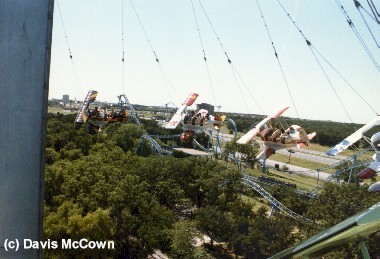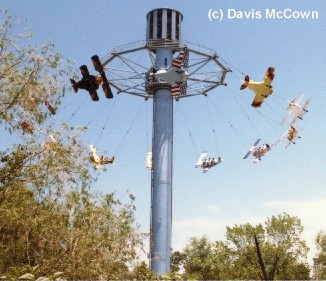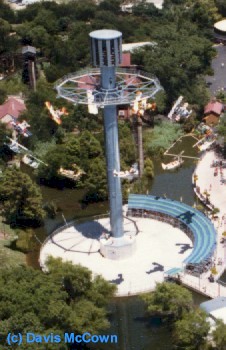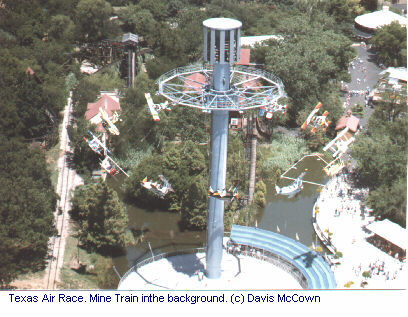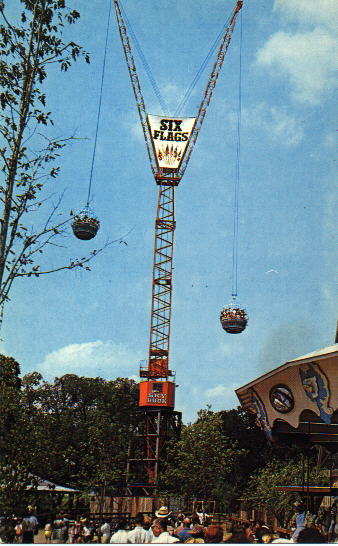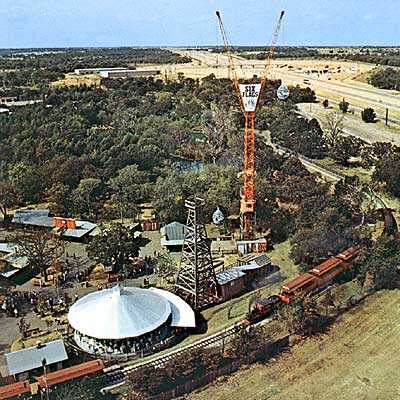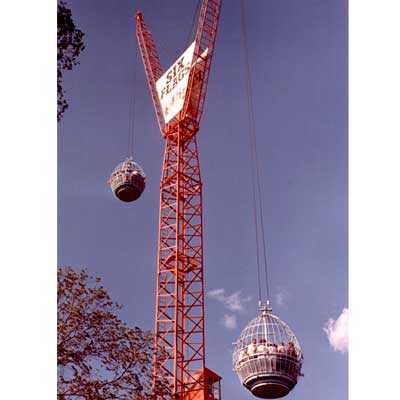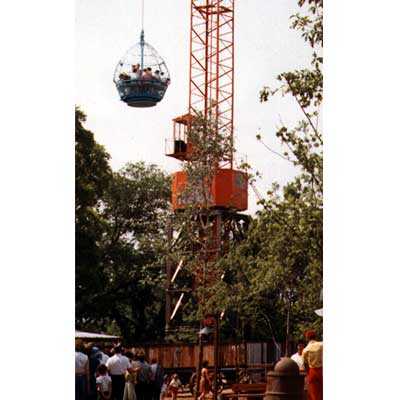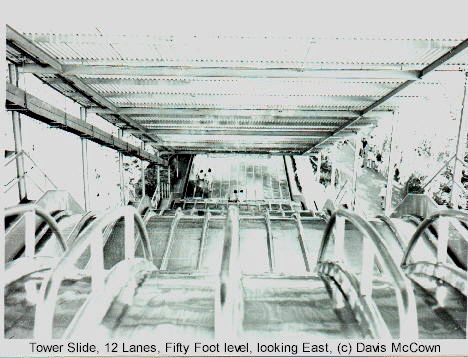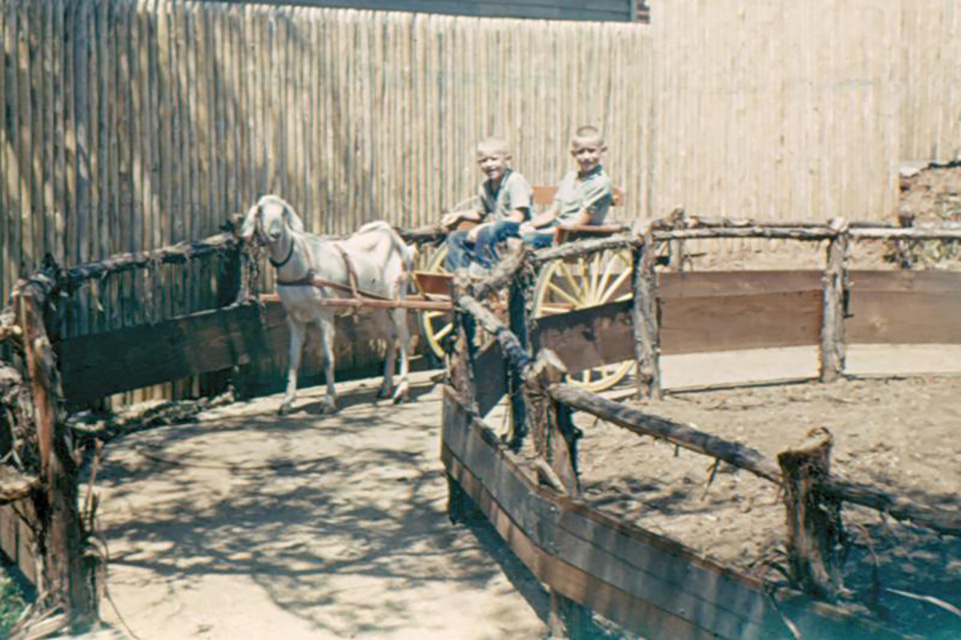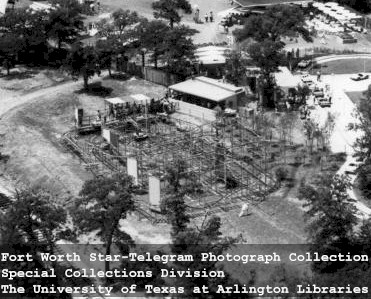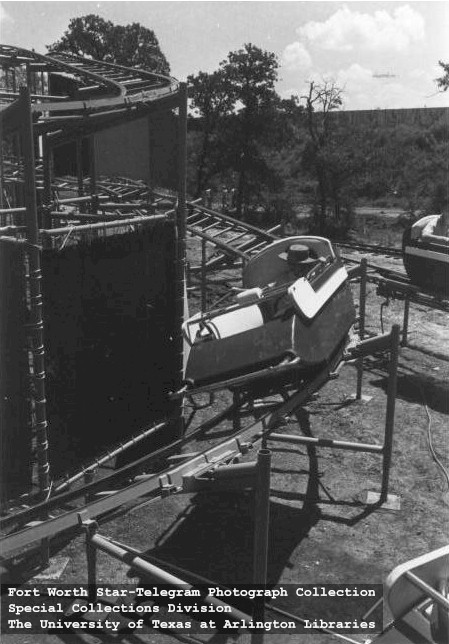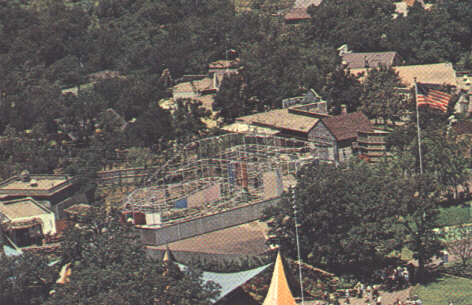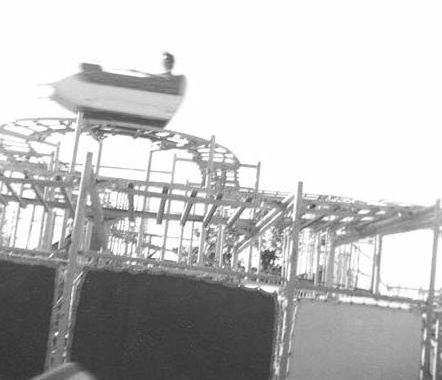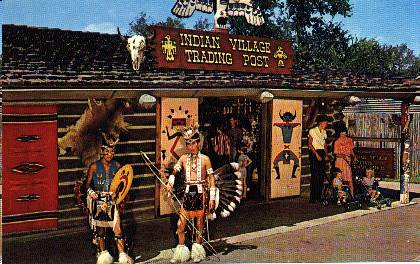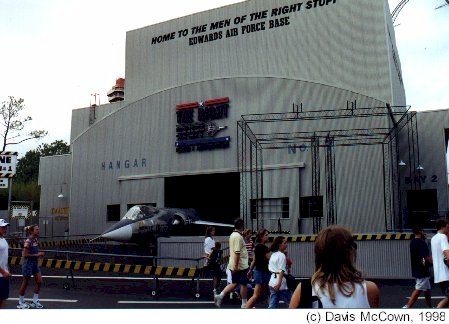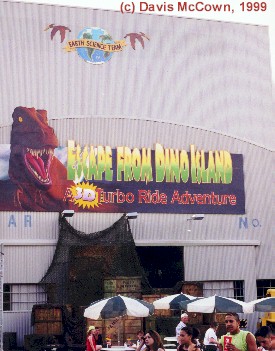Last Year Operated: 1988
Section: Goodtimes Square
Manufacturer:
Other Names and Nicknames: Roto-Disco
The Rotoriculous was built at the back of Good Times Square between the Bumper Cars and the Crazy Legs. The Rodoriculous was designed from a typical “Himalaya” style ride, with a chain of seats strung together to form a circle around the edge of the ride.
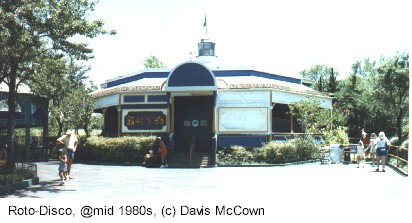
The Rotoriculous differed from other “Himalaya” style rides, however, in that it was completely indoors. It was housed in a small building with just enough room for the ride and control station. In addition to the ride, the room was equipped with special audio and visual effects, including the symbol of the seventies, a large disco mirror ball.
As the ride started, the cars moved up and down and they circled the track. As the ride slowly started forward, a recorded narration began, telling the story of the invention (the ride) and its intended purpose.
Within a few moments, however, the narrator announced that something had gone wrong, as which time the ride began to rotate backwards at much greater speed. Simultaneously with the ride changing directions, the sound became more chaotic, random slides were flashed at high speeds on the sides of the building, and other flashing lights went off.
Eventually, things were brought back to “normal”, the ride slowed down and the bizarre lights and sounds terminated. As the years past, the narrator was removed and the slides and lights became more random. Eventually, the ride was renamed the Roto-disco and the disco ball became the centerpiece effect.

